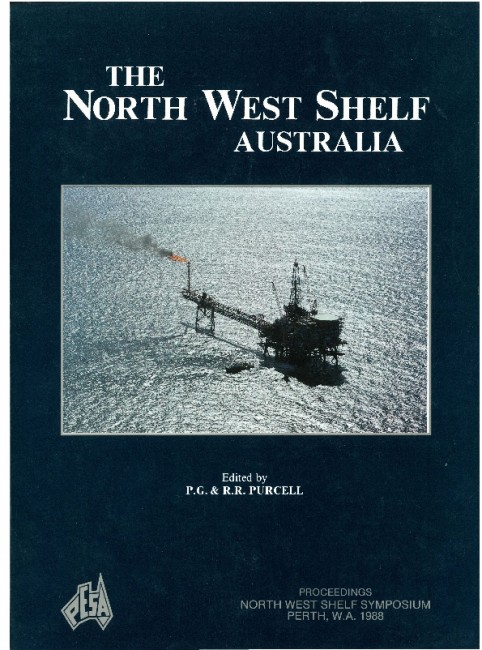Publication Name: The North West Shelf Australia
Authors: J.J. Veevers
Date Published: July 1988
Number of Pages: 20
Reference Type: Book Section
Abstract:
The North West Shelf is part of Australia's north-western continental margin. This margin evolved from a Mesozoic rifted-arch system that developed along the Gondwanaland/Tethyan margin, the successor to rifted-arch systems of Cambrian and Carboniferous age, and which had previously ruptured Gondwanaland. Rifting along the proto-margin in the Late Triassic developed into seafloor spreading in the Late Jurassic as a slender continental block, or sliver, separated from Australia. Subsequently, India and Australia separated in the Early Cretaceous to form the western margin.The modern East African/ Arabian rift system, with its distinct morphology and basin architecture, is used to develop a morphotectonic model of rift valley and continental margin basins. The dominant morphotectonic feature is a broad arch, split by a narrow rift valley. Sedimentary basins develop in the rift valley, and in broad depressions on either side of the arch, in what are called extra-arch basins. At breakup, by seafloor spreading in the former rift valley, each side of the arch becomes an uplifted edge, or rim, of the new continental margin. The former extra-arch basin is succeeded by a basin impounded behind the rim. By about 40 Ma after breakup, the rim subsides below sea level so that the entire margin faces the ocean, and sediment is deposited in an open margin basin.
These kinds of sedimentary basins are recognised in the palaeogeography of the North West Shelf. The Browse Basin first developed on the side of an arch, then behind a continental rim, and finally on the open margin. In the Exmouth Plateau/Rankin Platform/ Dampier region, a basin developed on the eastern side of an arch during the Permian and Triassic, and was disrupted by the rise of an inner arch in the Rankin area in the Early Jurassic; with Late Jurassic breakup, the arches became rims, and the depressions in the Exmouth Plateau and Dampier areas became rimbasins. By the Early Cretaceous, nearly 40 Ma after breakup, the rims subsided below sea level and the entire margin, including the Rankin Platform, was covered by open margin sediment. In the southern part
of the Exmouth Plateau, a marginal uplift alongside the transform fault that lay between Australia and India
was the source of a wedge of prograding sediment, akin to the prograding shoreline of Israel related to the
modern Levant transform fault system.
The occurrence of gas in the Rankin Platform is due to rift faults that brought reservoir sands of the extra arch
basin into contact with the organic-rich muds of the rim basin, and then to the reservoir being sealed and
brought to organic maturity by burial under sediments of the open margin.


